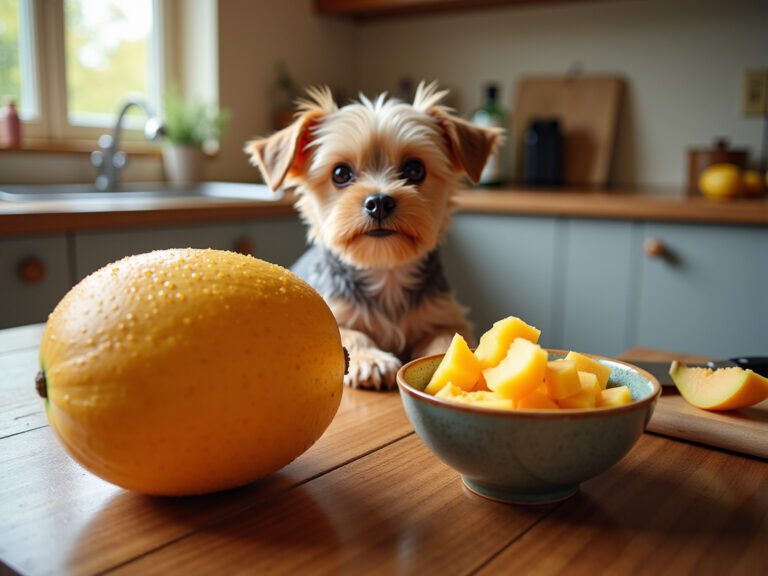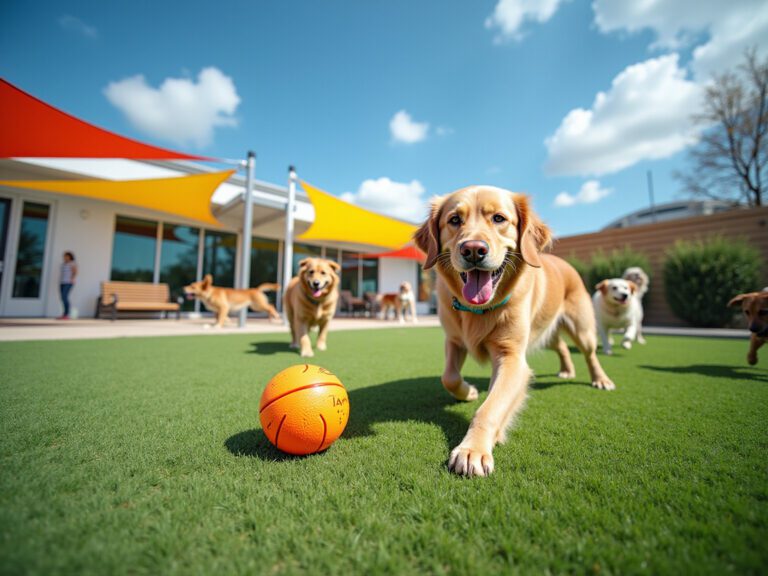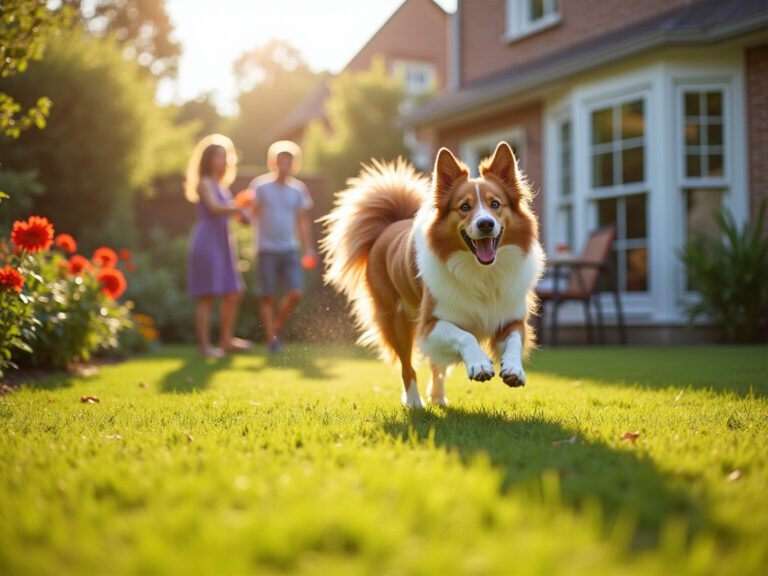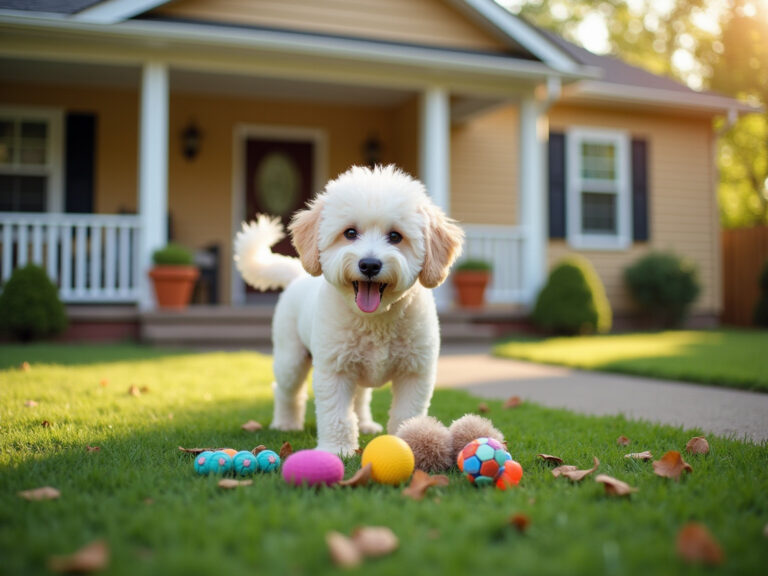Master the Husky Malamute Mix: Training, Care, and Health Insights
Overview
This article offers heartfelt insights into the training, care, and health considerations for the Husky Malamute mix, affectionately known as the Alusky. It highlights the significance of nurturing training techniques and a well-structured care routine, encompassing essential aspects like nutrition and exercise. Furthermore, it raises awareness of common health issues, ensuring that you, as a devoted owner, are well-equipped to nurture and support the well-being of your furry family member.
Introduction
The captivating husky malamute mix, known as the Alusky, is a remarkable blend of strength and agility, born from the resilient Siberian Husky and the powerful Alaskan Malamute. These hybrids not only offer companionship but also bring adventure to active families, making them beloved furry family members.
However, caring for an Alusky comes with its own set of challenges. How can you ensure that you meet the specific training, health, and grooming needs of this dynamic breed?
This article delves into essential insights for mastering the art of nurturing your husky malamute mix, equipping you with the knowledge to foster a happy and healthy life for your cherished pet.
Explore the Husky Malamute Mix: Characteristics and History
The hybrid breed known as the husky malamute mix, affectionately referred to as an Alusky, results from the wonderful union of the Siberian Husky and the Alaskan Malamute. With both parent breeds boasting a rich history as working dogs in the challenging Arctic, the Alusky embodies resilience and strength, making them a truly remarkable companion.
Characteristics:
- Size: Typically, Aluskies weigh between 60 to 100 pounds and stand 20 to 28 inches tall, showcasing their robust and athletic nature.
- Coat: They possess a thick double coat that varies in color, requiring regular grooming to manage shedding, particularly during seasonal changes.
- Temperament: Renowned for their intelligence and loyalty, Aluskies are also independent and may show a touch of stubbornness. This characteristic highlights the importance of consistent and patient training. As pack animals, they thrive on companionship and can experience separation anxiety if left alone for extended periods.
Health Considerations:
Aluskies may inherit health concerns from their parent breeds, such as hip dysplasia and cataracts. Regular veterinary check-ups are vital for monitoring their health, as studies show that 80% of dogs develop arthritis or joint pain by the age of 7. Investing in pet insurance can be a wise decision to help manage potential veterinary costs, ensuring your furry family members receive the care they deserve.
Grooming Needs:
Thanks to their thick double coat, Aluskies require regular grooming, especially during shedding season when more frequent brushing is necessary to manage their coat and prevent matting.
History:
While the precise origins of the Husky Malamute mix remain somewhat of a mystery, it is believed to have emerged as a beloved companion and working dog in the late 20th century. This delightful husky malamute mix combines the endurance of the Malamute, bred for hauling heavy loads, with the agility of the Husky, known for its speed and stamina. Consequently, these dogs excel in various activities such as sledding, hiking, and outdoor adventures, making them ideal companions for active families. Their hybrid vigor often results in a healthier dog, benefiting from the strengths of both parent breeds. Aluskies generally get along well with young children but should always be supervised due to their size and energy. Additionally, they can be quite vocal, often barking to communicate their needs.
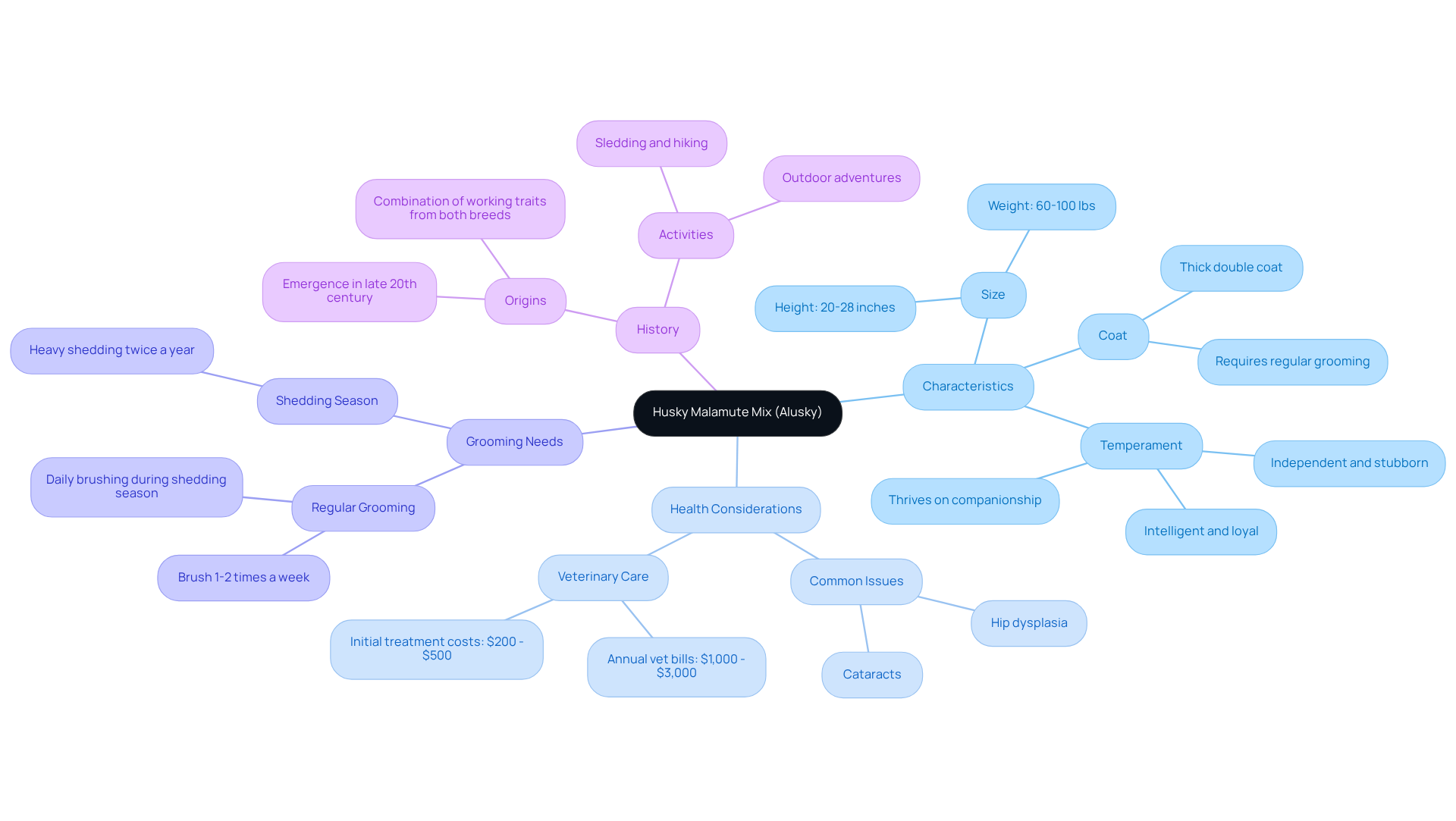
Implement Effective Training Techniques for Your Husky Malamute Mix
Training your Siberian dog mix can be a rewarding journey that requires patience, consistency, and a touch of creativity. Here are some effective techniques to nurture your furry family member:
-
Positive Reinforcement: Rewarding desired behaviors with treats, praise, and play not only encourages good habits but also strengthens the bond between you and your dog. Remember, if the desired behavior doesn’t happen more often, it may mean that the positive reinforcement isn’t quite hitting the mark.
-
Short Training Sessions: Keeping training sessions brief—around 10 to 15 minutes—will help maintain your dog’s attention and enthusiasm. Avoid exceeding 20 minutes, as shorter, focused sessions are known to enhance learning and retention.
-
Socialization: Early socialization is vital for developing a well-rounded temperament. Expose your dog to various environments, people, and other animals to help them feel comfortable in different situations.
-
Basic Commands: Start with essential commands like ‘sit,’ ‘stay,’ and ‘come.’ Use clear and concise commands, and remember to reward your dog immediately for compliance, reinforcing their learning.
-
Mental Stimulation: Challenge your dog’s mind with puzzle toys and interactive games. This not only prevents boredom but also curbs destructive behaviors, ensuring a happy and healthy pet.
-
Consistency: Establishing a routine for training is key. Consistency helps reinforce learning and builds trust, creating a nurturing environment for your beloved pet.
By embracing these techniques, you can foster a deeper connection with your dog, ensuring they thrive in a loving and supportive atmosphere. Let’s embark on this training adventure together, nurturing the bond with your furry family member every step of the way.
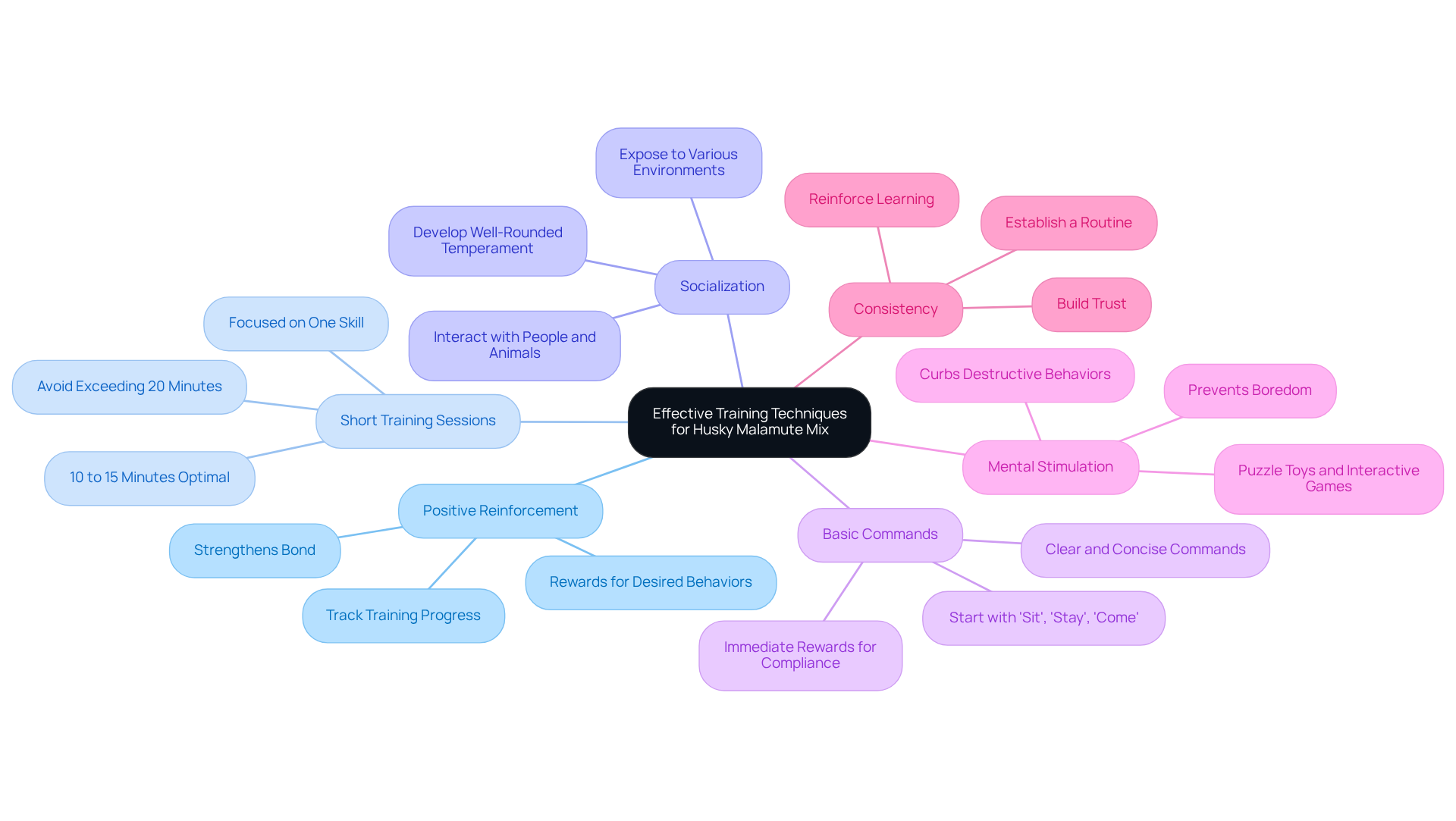
Establish a Comprehensive Care Routine: Nutrition, Exercise, and Grooming
To ensure your furry family member thrives, it’s essential to establish a comprehensive care routine for the husky malamute mix that embraces their unique needs and nurtures their well-being.
-
Nutrition: Providing high-quality dog food rich in protein and healthy fats is vital. Adult Aluskies typically require between 3.5 to 5 cups of food daily, divided into two meals, depending on their weight and activity level. A rough estimate suggests that canines should consume 2 to 3% of their ideal body weight each day. Additionally, consider adding supplements for joint health, especially for active or senior dogs, to support their mobility and overall happiness.
-
Exercise: Aim for at least 1.5 to 2 hours of vigorous exercise each day. Engaging activities such as running, hiking, swimming, and playing fetch are excellent for keeping your husky malamute mix physically fit and mentally stimulated. Remember, mental engagement is equally crucial; incorporate training sessions and interactive games to enhance their cognitive skills and prevent boredom.
-
Grooming: Regular grooming is essential for maintaining your dog’s health and hygiene. Brush your dog’s coat at least once a week, increasing the frequency during shedding seasons to manage loose fur effectively. A slicker brush is ideal for handling the undercoat. Don’t forget to regularly check and clean your dog’s ears, trim their nails, and brush their teeth to ensure they remain happy and healthy.
By embracing these care routines, you can create a nurturing environment where your Alusky can flourish and feel loved.
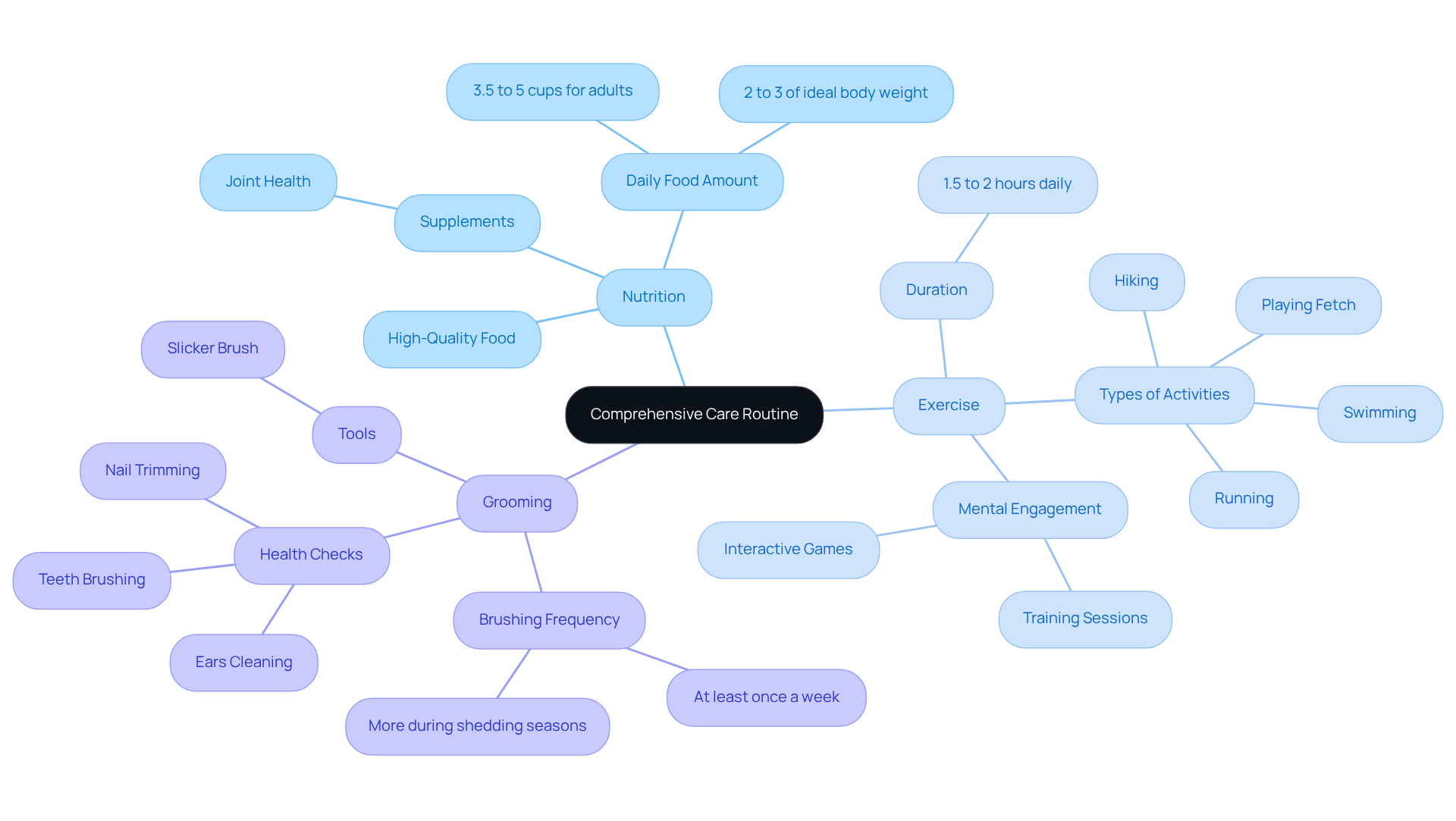
Recognize and Manage Common Health Issues in Husky Malamute Mixes
Caring for your furry family members is a priority, and understanding the potential health issues that a husky malamute mix may face is essential. Here are some common concerns:
-
Hip Dysplasia: This condition, prevalent in large breeds, involves the improper formation of the hip joint. It’s the leading non-traumatic cause of lameness in dogs. Regular vet check-ups and maintaining a healthy weight are vital for managing this condition. Early detection can make a significant difference, as untreated hip dysplasia often leads to joint pain and mobility challenges.
-
Eye Problems: Conditions such as cataracts and progressive retinal atrophy can affect your pet’s vision. Regular eye examinations are crucial for early detection and treatment, ensuring that your beloved companion retains their sight.
-
Hypothyroidism: This condition impacts the thyroid gland, leading to weight gain and lethargy. Regular blood tests can help monitor thyroid hormone levels, allowing for timely adjustments in treatment to keep your pet feeling their best.
-
Skin Issues: With their thick coats, a husky malamute mix may be more susceptible to skin infections or allergies. Regular grooming and monitoring for signs of irritation are important for maintaining skin health and preventing complications.
-
Dietary Sensitivities: Some Aluskies may experience food allergies or sensitivities. Consulting with a veterinarian to determine the best diet for your dog is essential for managing these sensitivities and ensuring optimal nutrition.
At Adventure Den, we understand the importance of a nurturing environment for your pets. By staying informed and proactive about these health issues, you can help ensure a happy and healthy life for your furry family members. Remember, your pet’s well-being is our top priority, and we’re here to support you every step of the way.
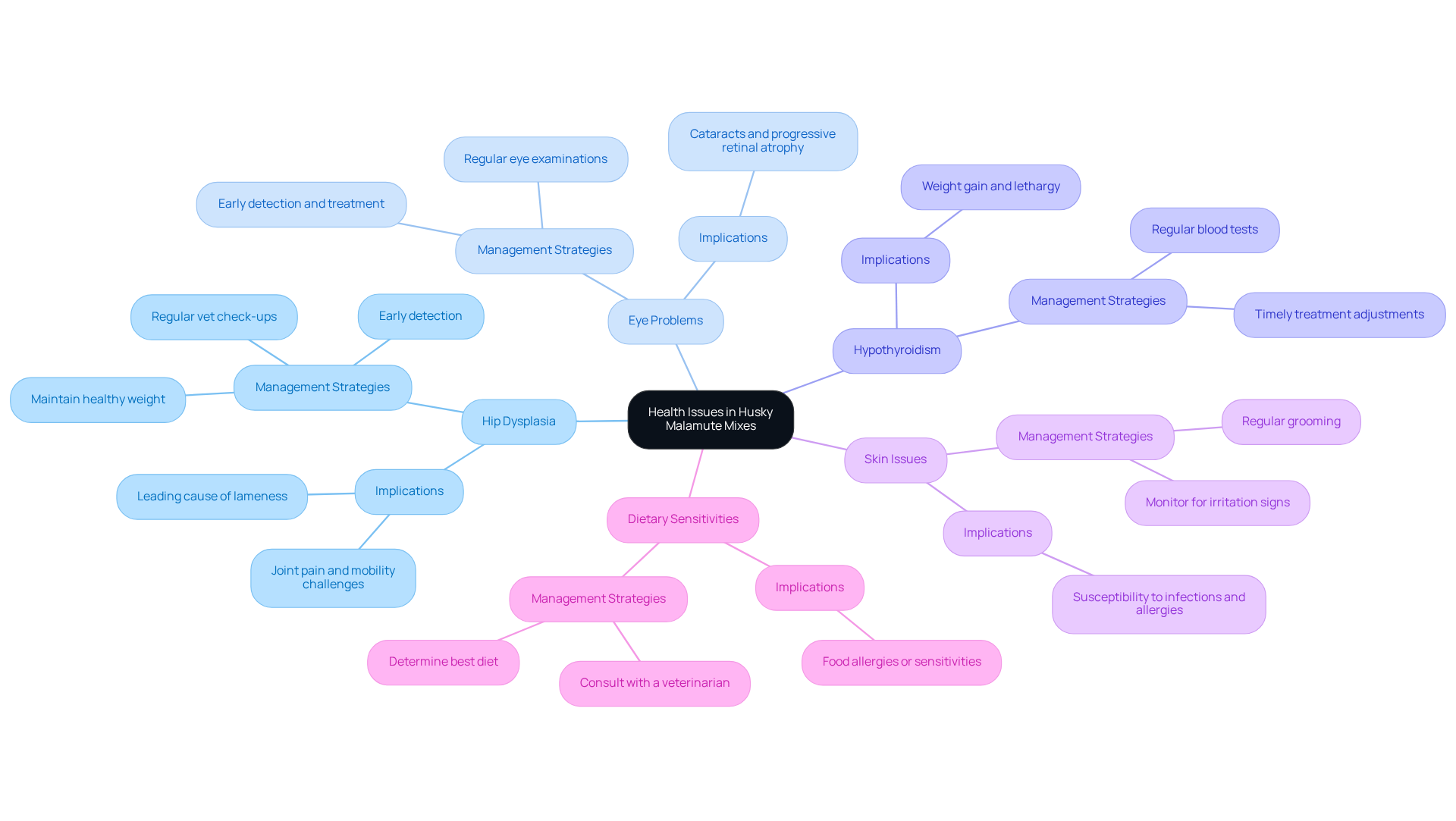
Conclusion
Understanding the unique needs of the husky malamute mix, or Alusky, is essential for providing a fulfilling life for these remarkable dogs. This hybrid breed combines the strength and endurance of the Alaskan Malamute with the agility and intelligence of the Siberian Husky, making them not only loyal companions but also active participants in various outdoor activities. Proper training, care, and health management are crucial to harness their potential and ensure their well-being.
Key points discussed include:
- Effective training techniques that emphasize positive reinforcement, socialization, and mental stimulation—vital elements for developing a well-rounded temperament.
- Establishing a comprehensive care routine that includes proper nutrition, regular exercise, and grooming is critical for maintaining the health and happiness of an Alusky.
- Awareness of common health issues, such as hip dysplasia and eye problems, further underscores the importance of proactive veterinary care to ensure a long, healthy life.
Ultimately, the husky malamute mix thrives on companionship, activity, and love. By embracing the insights shared in this article—whether through training tips, care requirements, or health management strategies—owners can foster a deep bond with their furry family members. Investing time and effort into understanding and meeting the needs of an Alusky not only enhances their quality of life but also enriches the lives of those who share their journey.
Frequently Asked Questions
What is a Husky Malamute mix?
The Husky Malamute mix, also known as an Alusky, is a hybrid breed resulting from the combination of the Siberian Husky and the Alaskan Malamute.
What are the size characteristics of an Alusky?
Aluskies typically weigh between 60 to 100 pounds and stand 20 to 28 inches tall, showcasing their robust and athletic nature.
What type of coat do Aluskies have?
Aluskies possess a thick double coat that varies in color and requires regular grooming to manage shedding, especially during seasonal changes.
What is the temperament of Aluskies?
Aluskies are known for their intelligence and loyalty but can also be independent and slightly stubborn. They thrive on companionship and may experience separation anxiety if left alone for long periods.
What health concerns should be considered for Aluskies?
Aluskies may inherit health issues from their parent breeds, such as hip dysplasia and cataracts. Regular veterinary check-ups are important, as many dogs develop arthritis or joint pain by age 7.
How often do Aluskies need grooming?
Due to their thick double coat, Aluskies require regular grooming, particularly during shedding season, to prevent matting and manage their coat.
What is the history of the Husky Malamute mix?
The exact origins of the Husky Malamute mix are unclear, but it is believed to have emerged as a companion and working dog in the late 20th century, combining the endurance of the Malamute and the agility of the Husky.
What activities do Aluskies excel in?
Aluskies excel in various activities such as sledding, hiking, and outdoor adventures, making them ideal companions for active families.
How do Aluskies interact with children?
Aluskies generally get along well with young children but should always be supervised due to their size and energy.
Are Aluskies vocal?
Yes, Aluskies can be quite vocal and often bark to communicate their needs.



